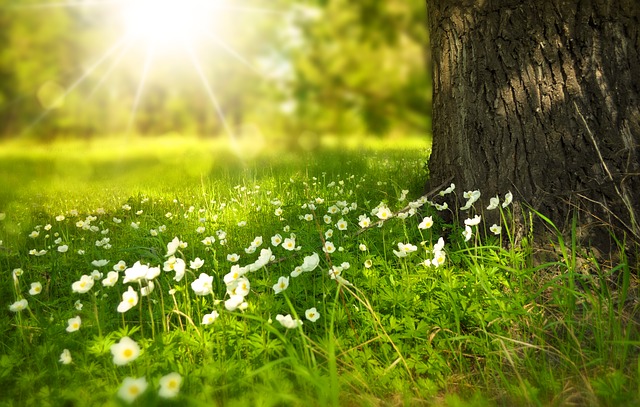Untitled 1
Ajapa Japa and the Mysterious Fourth Pranayama

In my
previous article I enumerated over a set of Pranayamas and their benefits.
The previous article presented Hatha Yoga point of view of the subject matter.
Hatha Yoga has always given great emphasis on Pranayama as a tool for cleansing
and Kundalini awakening. It would be equally interesting to take a quick look at
Pranayama from Raja Yoga point of view. To that end this article discusses what
Patanjali Yoga Sutras (PYS) have to say about Pranayama and its utility in
spiritual development of a yoga practitioner.
The main reference to Pranayama appears in second chapter of PYS when
Patanjali muni says:
तस्मिन्सति श्वासप्रश्वासयोर्गतिविच्छेदः प्राणायामः
Here Pranayama is being defined as - Pranayama is controlling the inhalation
and exhalation by assuming a steady posture.
This definition doesn't suggest a particular technique of Pranayama but it
underlines the essence of all Pranayamas. Let's see what this means for a
practitioner of Ajapa. When you sit for Ajapa Japa you are simply "watching"
your breath coming in and going out. You are not willfully controlling its pace
or any other parameter (such as duration). However, you fill find that after
"watching" the natural breath with awareness for some time, it automatically
becomes slow, smooth, and rhythmic. That means the simple act of observing the
natural breath makes it more controlled and rhythmic. Thus Ajapa Japa is in line
with what Patanjali has encoded in this sutra.
Patanjali further elaborates Pranayama by saying thus:
बाह्याभ्यन्तरस्तम्भवृत्तिर्देशकालसंख्याभिः परिदृष्टो दीर्घसूक्ष्मः
A single cycle of Pranayama can be broken down into three aspects -
Inhalation, Exhalation, and Retention. In Yogic terms these are called Puraka,
Rechaka, and Kumbhaka respectively. These three aspects can be further
classified based on three dimensions - place, time, and cycles. When these
parameters are gradually increased Pranayama becomes subtler and longer. How
does this apply to Ajapa Japa? During Ajapa you are simply watching the breath
coming in and going out, at the same time mentally synchronizing it with SoHam
mantra. As your practice matures you will observe that:
- The number of breathing cycles per minute drops down. For example, if
there were around 15-18 breaths per minute they become, say, 10 breaths per
minute.
- Gradually your awareness shifts from physical breathing to Pranic spinal
currents.
- Reduction of number of breathing cycles per minute means each breath is
taking more time.
If you carefully observe these spontaneous changes in the natural breathing
pattern you will find that Patanjali's sutra aptly applies to Ajapa Japa.
Now Patanjali proceeds to mention the pinnacle of Pranayama - Kevala Kumbhaka.
He says:
बाह्याभ्यन्तरविषयाक्षेपी चतुर्थः
The breath retention mentioned earlier is a willful act. A practitioner
forcefully retains the breath typically by closing nostrils and applying three
locks (Moola Bandha, Uddiyana bandha, and jalandhara Bandha). So, it is a
forceful Kumbhaka. Here, Patanjali is talking about altogether different type of
breath retention. This breath retention is spontaneous. It happens on its own.
Some Hatha scriptures mention Kumbhaka duration as long as 3.5 hrs. But this
Kumbhaka too is forceful. Nevertheless it prepares your body for spontaneous
Kumbhaka. Patanjali calls this spontaneous breath retention as "fourth"
Pranayama (other three are inhalation, exhalation, and forceful retention).
As far as Ajapa Japa is concerned the Kevala Kumbhaka or fourth Pranayama of
Patanjali happens automatically as your practice matures. The process of
reduction of breathing cycles per minute continues further. Since Prana and mind
are interconnected and interdependent, mind becomes steady and still. It further
causes Prana to take the spinal path and breathing becomes subtler and subtler.
Finally, "Kevali" happens on its own accord. Of course, this is a very advanced
stage and may takes many years (or births!) of regular practice. But point is -
unlike Hatha Yoga, Ajapa Japa doesn't call for forceful breath retention. Rather
it takes a pleasant and natural path approachable even to average
individuals.
What's the benefit of Kevala Kumbhaka? Patanjali explains that in the next
sutra:
ततः क्षीयते प्रकाशावरणम्
धारणासु च योग्यता मनसः
Atman is self-illuminating. But it is covered by impurities. These impurities
in the form of Tamas and Rajas must be destroyed so as to promote Satvic
tendencies. Kevala Kumbhaka destroys these impurities and makes your mind
suitable for Dharana or Yogic Concentration.
OM HamSah SoHam !!